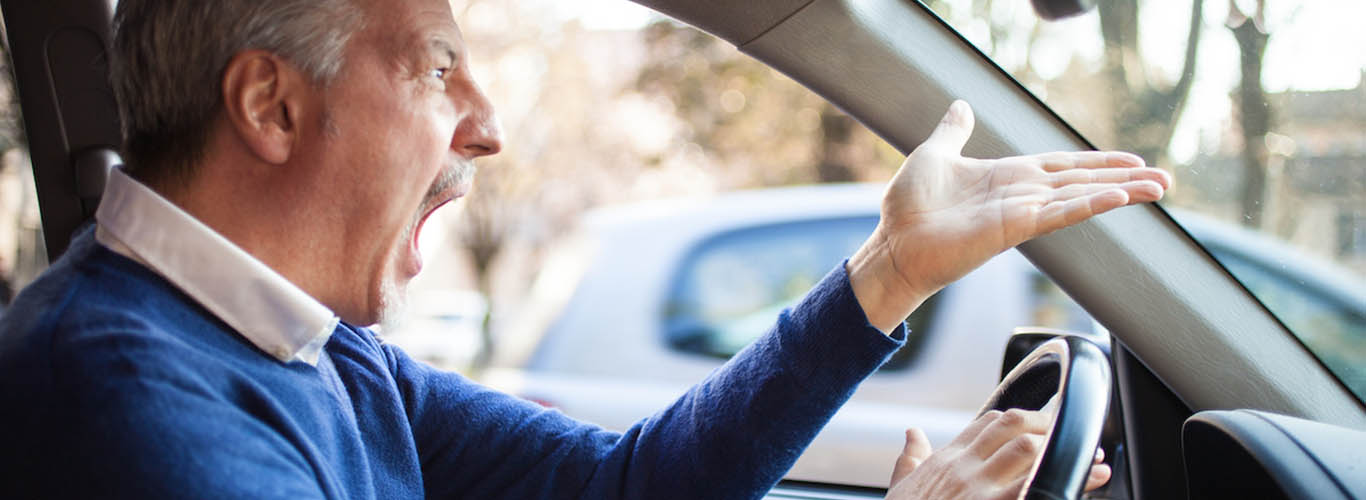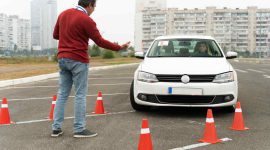Road rage is a common term used to describe aggressive, violent, or angry behaviour that can occur while driving, typically caused by frustration or anger towards other drivers on the road. In many cases, this behaviour can include yelling, honking, obscene gestures, tailgating, and even physical violence or threats. It’s a good idea to keep yourself safe in any road rage situation instead of getting involved in it.
Road rage incidents can escalate quickly, resulting in accidents or physical altercations, and have long-lasting emotional and psychological effects on those involved. Knowing how to recognise and avoid road rage, you can stay safe and reduce your risk of becoming a victim or causing an incident yourself. Read this in-detailed buying guide to understand road rage deeply and discover tactics to deal with it.
Signs of Road Rage
Every driver faces uncomfortable situations on the road, especially when they are learning to drive or are on the highway for the first time. But it’s essential to understand the different situations that one may face dealing with them. The following are the most common situations that are considered road rage.
Behavioural Road Rage Situations
The behavioural road rage situations are the beginning of something big. They may happen because the person on the wheels behind your car is in some emergency. Some other scenarios are:
- Surpassing the posted speed limit
- Following another vehicle too closely
- Making unsafe/wrong lane changes
- Failing to yield the right of way
- Violating traffic signals/ lights
- Improperly passing another car
Intense Road Rage Situations
If a road rage situation is more intensive than what we looked at in behavioural road rage situations, it must be a more dangerous road rage situation. Those are the following:
- Verbally yelling/ insulting
- Threatening actions of violence
- Making rude or indecent gestures
- Physically contending someone
- Attempting to intimidate
- Ramming / sideswiping into other cars

What to Do if You’re a Victim of Road Rage?
Road rage can be destructive or unsafe if you don’t know how to deal with it or whether to react or let it go. Or, if one should react to it, what are those situations when it’s suggested? The following are the things experts suggest to deal with road rage situations.
Keep Yourself Calm
This is the first and most obvious solution for everybody facing a road rage situation. Although it seems not a big deal, staying calm during road rage is challenging. The following are tips for keeping yourself calm during a road rage incident.
- Take Deep Breaths: Inhaling and exhaling slowly can help reduce stress and calm your nerves.
- Listen to Calming Music: Play soothing music that helps you relax, which can help distract you from stressful situations.
- Avoid Eye Contact: Direct eye contact with angry drivers can further provoke them. Instead, focus your attention on the road ahead.
- Don’t Engage: Do not respond to the angry driver with aggression or retaliation. This can only make the situation worse.
- Practice Mindfulness: Focus on your breath and the sights and sounds around you to help you stay calm.
Let Others Pull Over
If you are confronted with road rage from another driver driving behind you and honking heavily, it is best to let them pass or pull over and go ahead of you. This is a way to avoid further confrontation and de-escalate the situation.
This is because it is essential to prioritise your safety and the safety of others on the road. Allowing the other driver to pass you or pull over to the side of the road reduces the risk of accidents or other dangerous situations on the road.
Do Not Break-Check
During a road rage incident, avoiding engaging in behaviours that could provoke or escalate the situation is essential. One such behaviour is break-checking, which involves suddenly braking or slowing down in front of another driver.
Break-checking can be extremely dangerous and could cause a collision or even a multi-car pileup. It can also provoke the other driver and escalate the situation, potentially leading to violence or other dangerous behaviours.
If you are being tailgated or followed too closely by another driver, staying calm and focused on the road ahead is the best course of action. Avoid sudden braking or other aggressive manoeuvres that could provoke the other driver.

Stay in your Car
If the other driver is exhibiting aggressive or dangerous behaviour towards you, it may be tempting to confront them or get out of your car to defend yourself. However, this can be extremely dangerous and can escalate the situation further.
Staying in your car can provide a protective barrier between you and the other driver. If you feel threatened, you can lock your doors and call for help. You can also use your phone to take photos or videos of the other driver’s behaviour to document the incident.
If the other driver tries to approach your car, do not roll down your window or engage with them in any way. Instead, driving away as quickly and safely as possible or waiting for law enforcement to arrive is suggested if you have called them.
Document the Incident
Documenting the incident during a road rage situation can be helpful if you need to report the incident to law enforcement or your insurance company. Here are some tips on how to document the incident properly:
- Use your phone to take photos or videos of the other driver’s behaviour. Ensure to capture their car’s licence plate and any damage to your vehicle or theirs.
- Write down any important details about the incident, such as the location, time, and date, as well as a description of the other driver and their car.
- If there are witnesses, ask for their contact information and a brief statement of what they saw.
- Report the incident to law enforcement as soon as possible. Provide them with any documentation or evidence you have, such as photos or videos.
- If you want to file a lawsuit with your insurance firm, provide them with a detailed account of the incident, including any documentation or evidence you have.
Call for Help If Necessary
Calling for help may be necessary during a road rage incident if you feel threatened or in danger. Here are some tips on how to call for help effectively:
- Call the emergency services by dialling 999 if you have a mobile phone. The operator will ask you to provide your location and a brief situation description.
- Stay on the line with the operator and follow their instructions. They may ask you to provide more information or to stay in a safe location until help arrives.
- Honk your horn repeatedly or flash your headlights to attract the attention of other drivers if you feel that you are in immediate danger to attract other drivers’ or law enforcement’s attention.



